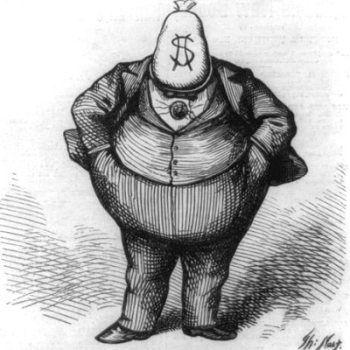Let’s say we arrange a private student loan, you and I.
I agree to lend you $10,000 at 8 percent interest. After you graduate and get a job (for the purposes of this hypothetical, we’ll pretend that’s easy, or at least possible) you begin making payments.
This works out nicely for both of us. Your tuition got paid, and now I’m reaping a neat little 8-percent return on my investment.
But you know what’s even nicer than an 8-percent return? A 15-percent return.
Alas, we have a deal, in writing, and the terms of that deal are clear.
Ah, but what’s this? It says here that this rate of 8 percent is based on your credit score. And your credit score, it seems, is based in part on my reporting to the credit-rating agencies.
So I have the opportunity to improve the rate of return on my investment. I have an incentive to do so.
For the first year, perhaps, I will just sit and wait, watching closely, ready to pounce on the slightest misstep. Any delay, any slight hiccup in your reliably steady payment schedule and I will seize on that lapse, rushing to inform the unelected, unaccountable overlords of Equifax, Experian and TransUnion who will in turn lower your credit score, thus enabling me to raise the interest rate on your loan.
But let’s say, for the sake of this hypothetical, that you were not only able to find a job, but a good job, and that you manage for this first year not to provide me with any excuse for reducing your credit score.
Very well, if you won’t provide me such an excuse, I will have to see if I can manufacture one.
In the sixth paragraph of an otherwise dense and irrelevant email, I inform you that your monthly payment due date will be switched from the 16th to the 11th. In the 13th paragraph of a subsequent email, I inform you that my new software requires that your automated electronic payments be submitted three (3) business days before they will be credited to your account. The 29th paragraph of a later email apologizes for the unfortunate pattern of glitches in this new software. The 83rd paragraph of another email notes that, due to our software not counting Arbor Day as a business day, the electronic payment you submitted six months ago on the 8th was not processed until the 9th and thus not credited to your account until the 12th. Since your automated payments for the following five months did not include the late fee and subsequent penalties for underpayment, I had no choice but to report this delinquency to the credit-rating agencies, which consequently lowered your credit score thus, in turn, requiring me to charge you a new and higher rate of interest. Retroactively. This will all be fully explained in the 72nd paragraph of a forthcoming email.
Now, here in real life I personally would not try to screw you over like that just for the chance to milk you for a higher rate of interest than we had earlier agreed upon. I would choose not to do so even though, the way this system is set up, I would have every incentive to do so.
Unfortunately, the same set of instincts and/or principles that would keep me from bowing to those incentives also mean that, here in real life, I’m not the sort of person who has $10,000 available to lend you. The sort of person or institution that is able to lend that kind of money is also, by definition, the sort of person or institution unable to imagine that not following those incentives is an option. Not screwing you over would be, to them, a violation of fiduciary responsibility.
And this is where we are.
We have a credit-rating system that encourages lenders to damage the credit “scores” of their borrowers. The “subprime” gold rush of the housing bubble wasn’t just a matter of lenders eagerly seeking out subprime borrowers, but also — following the well-established business model of the credit-card industry — of lenders seeking new and creative ways to push responsible borrowers into subprime rates.
And the same thing is happening now in the student loan bubble.
We could try to address these through legislation or through class-action litigation. Either of those approaches would be difficult, but probably better — if less emotionally satisfying — than the more old-fashioned approach involving feathers and tar and that other, older kind of stocks and bonds.
In any case, addressing this now, before the bubble bursts, would be more prudent than trying to fix things afterwards.












